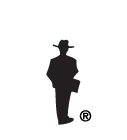I just returned from speaking at a conference in Miami. I checked into my hotel, and as part of my debriefing from the travel, I found the in-room safe to safely store my laptop, camera and other electronic devices.
As I read the instructions it dawned on me that we used our credit and debit cards in many different contexts beyond store purchases, gas purchases, red box terminals and ATM machines.
At the airport I had to use a credit card to retrieve my boarding passes – the airlines call it “self-service” checkin. Nothing self-service about it, we had to get in line both ways due to system issues. I wondered what system was behind the self-service terminals that hundreds of thousands of travelers insert their credit card into every traveling day, and more importantly, what safeguards were in place to protect my card information from skimming or theft.
The safe in our room had two options – enter a private code or swipe a credit card on the reader. The same card used to close the safe would be required to be swiped to re-open the safe. I wondered what systems were behind the safe tracking my credit card information, and more importantly, who had access to my card information when I swiped. I chose to enter a four digit code, as I had no way of knowing if dishonest employees could access all the cards swiped on the room’s safe. And then I wondered how many safes were in this one hotel – hundreds. In all the rooms in all the hotels in the US alone – thousands…
An individual attending one of my sessions in Miami asked me what I suggested for a replacement to using debit and credit cards due the high incidence of skimming. She asked if we should switch back to cash only. I responded that if we did that, the number of personal robberies would certainly increase.
The solution if to be prudent where you use your credit card, monitor your card’s activity, loose your debit card (and switch to a credit card), and remain vigilant.

Good job!
I like this post. Keep it coming.
Great remarks were made by the author of this post.
I have worked as a fraud consultant within the hotel industry for over 13 years. A hotel guest has nothing to worry about when they use their credit card to open or close an in room safe. Credit cards have “tracks” within the magnetic strip. The credit card information is contained on one track that is not accessible to businesses outside of the credit card industry. The in room safe creates an algorithm from the first track of the magnetic strip. This strip does not contain credit card information or any other sensitive privacy information.
Thanks you for this wonderful post admin.Good job.
GOOD blog , really interesting informations i’vde found here, i will segure past by more offten and read it!
“I’d like to say that you always offer valid information and I have been an fascinated reader of your site for quite some time. I wanted to say thankyou really 🙂 for all the good work you do!”
thanks for keeping me up to date on this subject.
Sent via Blackberry
Excellent information here. This interesting post made me smile. Maybe if you throw in a couple of pics it will make the whole thing more interesting.
Hi webmaster, commenters and everybody else !!! The blog was absolutely fantastic! Lots of great information and inspiration, both of which we all need!b Keep ’em coming… you all do such a great job at such Concepts… can’t tell you how much I, for one appreciate all you do!
Pretty insightful post. Never thought that it was this simple after all. I had spent a good deal of my time looking for someone to explain this subject clearly and you’re the only one that ever did that. Kudos to you! Keep it up
Thank you for another informative blog. Where else could one get that kind of information written in such a perfect way? I have a presentation that I am just now working on, and I have been on the look out for such info.
How-do-you-do, just needed you to know I have added your site to my Google bookmarks because of your extraordinary blog layout. But seriously, I think your site has one of the freshest theme I’ve came across. It really helps make reading your blog a lot easier.
Your feeds are fed into other blogger’s RSS feeders, making it syndicated or putting in another way, people out there will subscribe to them and receive online copies of your text.
Thanks for a awesome post and interesting comments. I found this post while searching for some lyrics. Thanks for sharing this article.